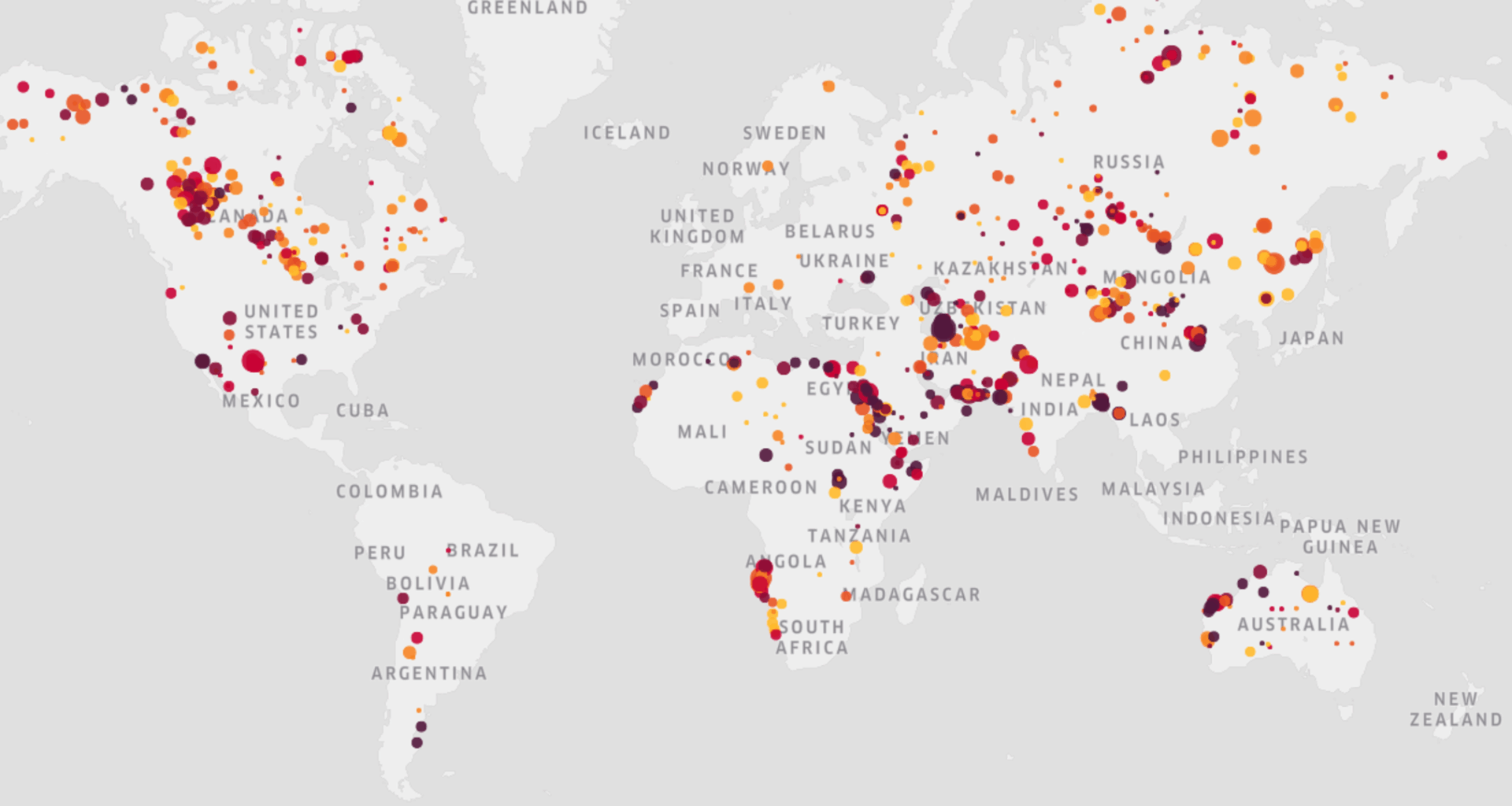Enabling & Support
23/10/2025
392 views
6 likes
Methane accounts for approximately one-third of global temperature rise over the last decade, making it the second most impactful greenhouse gas in the atmosphere. The oil and gas industry is responsible for roughly one-third of human-caused methane emissions, and detailed surveys consistently reveal that about half of all leaks at these facilities are unknown to their operators at any given time.
New regulations in the US, Canada, and Europe focus on emissions above 100 kg/hr – the current detection limit for satellite monitoring. But research shows that only detecting and fixing leaks at this level would address just 25% of total methane emissions from the sector. The remaining 75% comes from smaller leaks.
A recent ESA Discovery study has shown it’s feasible to build a satellite instrument capable of detecting leaks ten times smaller – opening the door to drastically reducing methane emissions from the energy industry.
“Detailed surveys of oil and gas facilities show that if we only detect and fix 100 kilograms per hour leaks and above, that’s only about 25% of what the oil and gas industry leaks,” explains Neil Rowlands, the project engineer at Honeywell who led the study. “If we go to 10 kilograms per hour, we’re getting 75% of the leaks.”
Small satellites, big impacts
The ‘Precise Methane Leak Detection from Orbit‘ study developed a concept for a narrowband imaging instrument that could achieve this tenfold improvement in sensitivity. The proposed design would use a 25 cm aperture to image 5 km × 5 km regions of the ground at 10 m resolution, spending around 30 seconds observing specific targets.
The project brought together Honeywell in Canada with atmospheric modelling expertise from the University of Saskatchewan. Canada is ESA’s only non-European cooperating state, enabling Canadian companies to participate in ESA’s early-stage research programmes.
Weighing approximately 30 kg, the instrument concept is too large for CubeSats, but small enough that a constellation of microsatellites providing regular revisit times over facilities worldwide is economically viable.
The oil and gas industry has always known that methane leaks represent wasted product. Most major companies run leak detection and repair (LDAR) programmes using ground-based sensors. But these cannot provide continuous monitoring of distributed facilities with 100% coverage.
“The other advantage of having a more sensitive system would be to give operators a heads up and allow them to fix things before they reach the regulatory threshold,” says Rowlands. “LDAR surveys using ground crews can’t be done continuously, and third-party surveys with airborne LIDAR consistently find that operators are unaware of about half their leaks. Satellite monitoring that provides a good survey every week or two would be a huge benefit for identifying and fixing those leaks.”
From product loss to climate action
Applied worldwide to the oil and gas industry, reducing methane leaks by 75% could reduce global warming by approximately 0.15°C by 2050. The leaked methane also represents lost revenue – for the US alone, around US$2.5 billion in product currently escaping into the atmosphere.
“ESA’s Discovery Programme focuses on exploring and maturing promising new ideas so they can evolve into future ESA missions or technologies,” says Iga Szczesniak, ESA lead on the project. “This study rethinks methane detection by proposing a novel design for a satellite-based sensor and analysing the trade-off between instrument size and resolution to enable more precise applications. It also demonstrates strong commercial potential and could contribute to climate change mitigation, providing motivation for further development and a possible new space mission.”
The feasibility study has laid the groundwork for two parallel developments – construction of a working prototype to demonstrate the technology and a full mission concept study to determine how many satellites would be needed, define the ground segment requirements, and develop a business case.
The potential customers aren’t just oil and gas companies looking to avoid fines and reduce waste. Environmental monitoring agencies and NGOs concerned with climate action would also benefit from more precise, continuous monitoring of methane emissions.
The project was proposed through ESA’s Open Space Innovation Platform, which seeks out promising new ideas for space research, and was funded by the Discovery element of ESA’s Basic Activities.
The project was proposed through ESA’s Open Space Innovation Platform, which seeks out promising new ideas for space research, and was funded by the Discovery element of ESA’s Basic Activities.
Like

